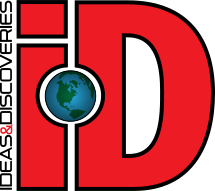Classical physics theories suggest that when two or more electromagnetic waves interfere destructively (i.e., with their electric fields canceling each other out), they cannot interact with matter. In contrast, quantum mechanics theory suggests that light particles continue interacting with other matter even when their average electric field is equal to zero.
Researchers from Federal University of São Carlos, ETH Zurich and the Max Planck Institute of Quantum Optics recently carried out a study exploring this contrast between classical and quantum mechanics theories through the lens of quantum optics, the field of study exploring interactions between light and matter at a quantum level. Their paper, published in Physical Review Letters, proposes that classical interference arises from specific two-mode binomial states, which are collective bright and dark entangled states of light.
“After a long-standing and fruitful collaboration on cavity QED topics with the first author, Celso J. Villas-Boas, he and I exchanged many insightful ideas concerning the reported topic over a period of several years or so,” Gerhard Rempe, senior author of the paper, told Phys.org.
“Inspired by my quantum information experiments with one atom coupled to two optical cavities and single photons flying into and out of the cavities, he was wondering what would happen if the atom were exposed to two light fields which are both in superpositions of zero and one photon. He described the situation in terms of bright and dark states of light, a concept which relates to Dicke’s bright and dark states of atoms from the 1950s.”
In the scenario considered by Villas-Boas, the two (or more) atoms described by Dicke in his work are replaced by two (or more) optical modes containing zero or one photon. Within this context, the terms “bright” and “dark” entail that a ground-state atom can be excited or cannot be excited (due to destructively interfering excitation amplitudes), respectively.
“Responding to this picture, I compared the situation with that of two coherent states of light that interfere destructively and therefore cannot excite the atom at the position of a field node (where the intensity is zero),” explained Rempe. “My comparison between quantum and classical light fields literally forced us to think about the relationship between classical interference with intensity maxima/minima and quantum-mechanical bright/dark states of light.”
Building on the ideas discussed with Rempe, Villas-Boas theoretically analyzed the double-slit experiment using both single-photon (quantum) and coherent (quasi-classical) states. His analyses showed that experimentally observed interference patterns, maxima and minima, could in fact be explained in terms of bright (detectable) and dark (undetectable) states of light.
“Many partly controversial discussions between the two of us then led to a totally new interference picture which makes use of particles instead of fields,” said Rempe. “For example, a classical standing-wave light field (composed of two counter-propagating light waves) with periodic intensity maxima and minima is now described as an alternating succession of bright and dark states of photons, respectively.”
A notable feature of dark states is that they contain photons. The new theoretical framework outlined by the researchers suggests that these photons are present at the nodes of an interference pattern. As the state they are associated with is dark, however, these photons were hypothesized to be unobservable using conventional experimental methods.
“This is a highly counterintuitive picture which initially made us doubt that our description can be correct,” explained Rempe. “Support came from an experiment that I conducted in my group in the late 1990s, which concerned the role of a which-path observer in double-slit experiments.
“As had been controversially discussed at that time, which-path observation (of a particle through the double slit) can be so gentle as to not exert a momentum kick on the interfering particle. This raises the so far open question of how the observation can steer the particle from a bright into a dark region in order to wash out the interference pattern.”
The new theoretical approach outlined by the researchers provides a quantum optics-based alternative explanation for classical interference. Specifically, it suggests that which-path detection changes the state in dark regions to a bright state. Namely, without necessarily altering the trajectory of a particle, a which-path observer can alter the state in such a way that the particle becomes detectable.
“In my humble opinion, our description is meaningful as it provides a quantum picture (with particles) of classical interference (with waves): maxima and minima result from entangled bright (that couple) and dark (that do not couple) particle states,” said Rempe. “I would say that our picture resolves aspects (such as which-path detection) of an old debate involving some of the greatest minds, such as Newton (particles), Maxwell (waves), Einstein (particles), Millikan (waves), and many others.”
The recent study by Rempe, Villas-Boas and their colleagues establishes a new view of the classical interference of waves, which describes the maxima and minima intensity in terms of entangled bright/dark quantum superpositions of particles. While researchers already knew that Maxwell’s classical equations fail to describe many quantum optics phenomena, the team’s new theory offers a more general description of interference.
“In some sense, we showed that Maxwell’s equations are a limiting case of quantum mechanics,” said Rempe. “This is achieved by incorporating two effects into the model. First, the detector monitoring the interference pattern and its coupling to light is treated fully quantum mechanically. Second, the interference is described as resulting from entangled particle states.
“These states are found to be bright or dark (or anything in between), depending on whether they couple to the detector or not, respectively. A characteristic feature of the dark state is that it contains particles, but that these particles remain unobservable for the chosen detector,”
The recent work by this team of researchers could soon inspire further studies aimed at further developing their newly introduced theory, which describes interference phenomena in terms of particles instead of waves. Their proposed framework could advance the present understanding of classical interference, while also potentially guiding future experimental efforts.
“In this study, we specifically studied the case of light particles observed by a two-level atom in its ground state,” added Rempe. “I think it would also be interesting to explore the case of material particles observed by any other suitable detector such as an ionization device or just deposition on a surface.”
More information:
Celso J. Villas-Boas et al, Bright and Dark States of Light: The Quantum Origin of Classical Interference, Physical Review Letters (2025). DOI: 10.1103/PhysRevLett.134.133603. On arXiv: arxiv.org/html/2112.05512v2
© 2025 Science X Network
Citation:
New quantum optics theory proposes that classical interference arises from bright and dark states of light (2025, April 25)
retrieved 26 April 2025
from
This document is subject to copyright. Apart from any fair dealing for the purpose of private study or research, no
part may be reproduced without the written permission. The content is provided for information purposes only.

